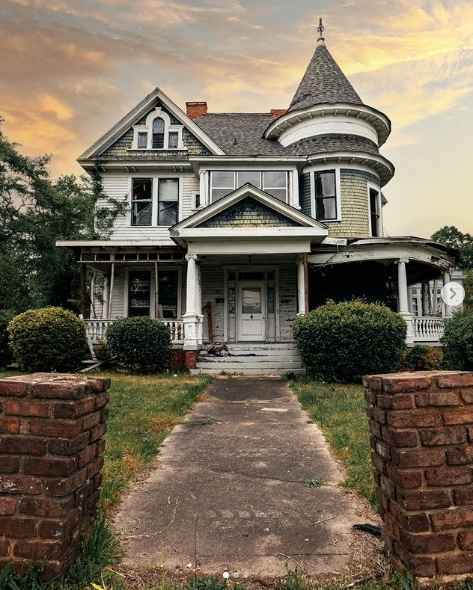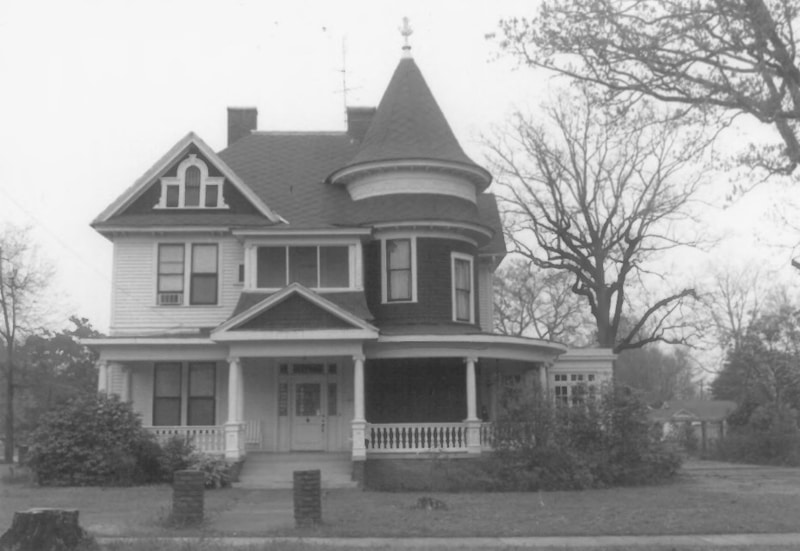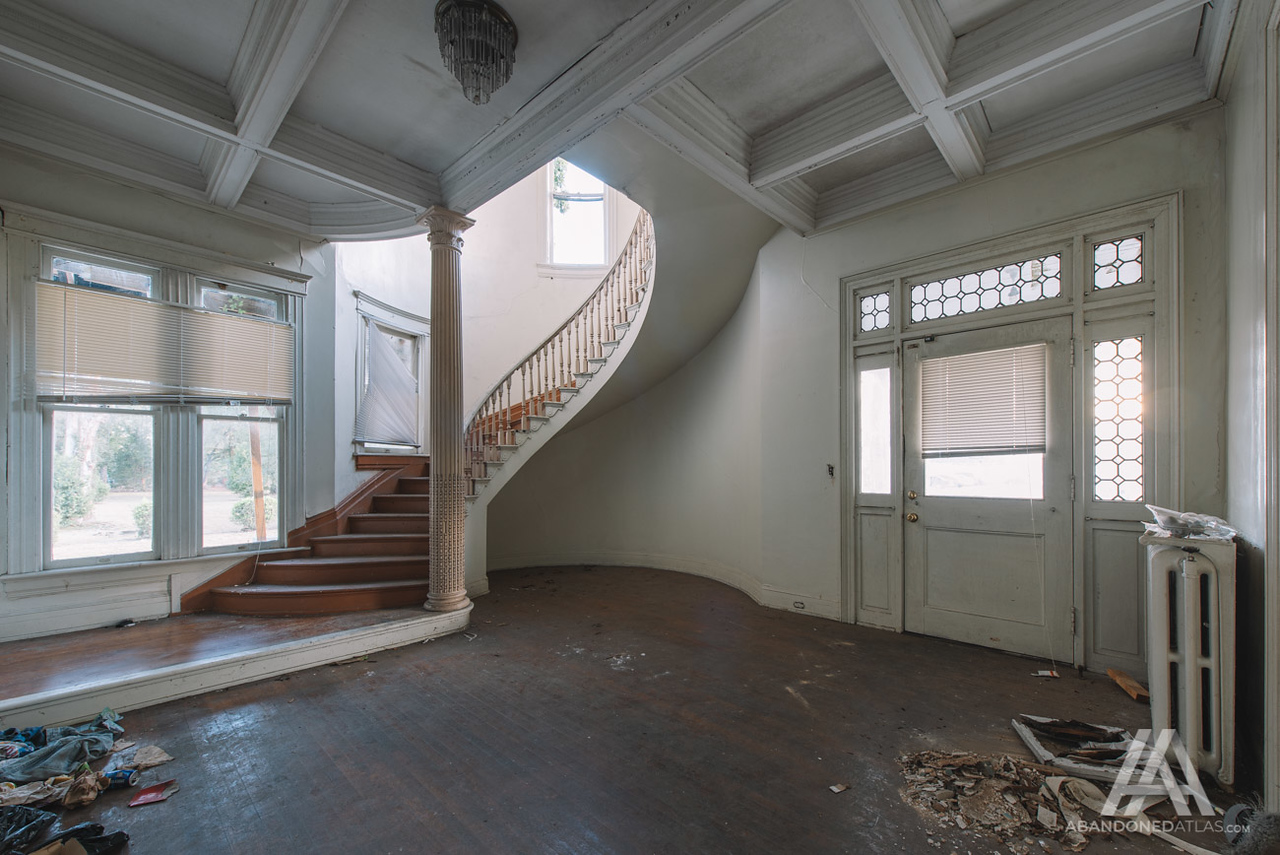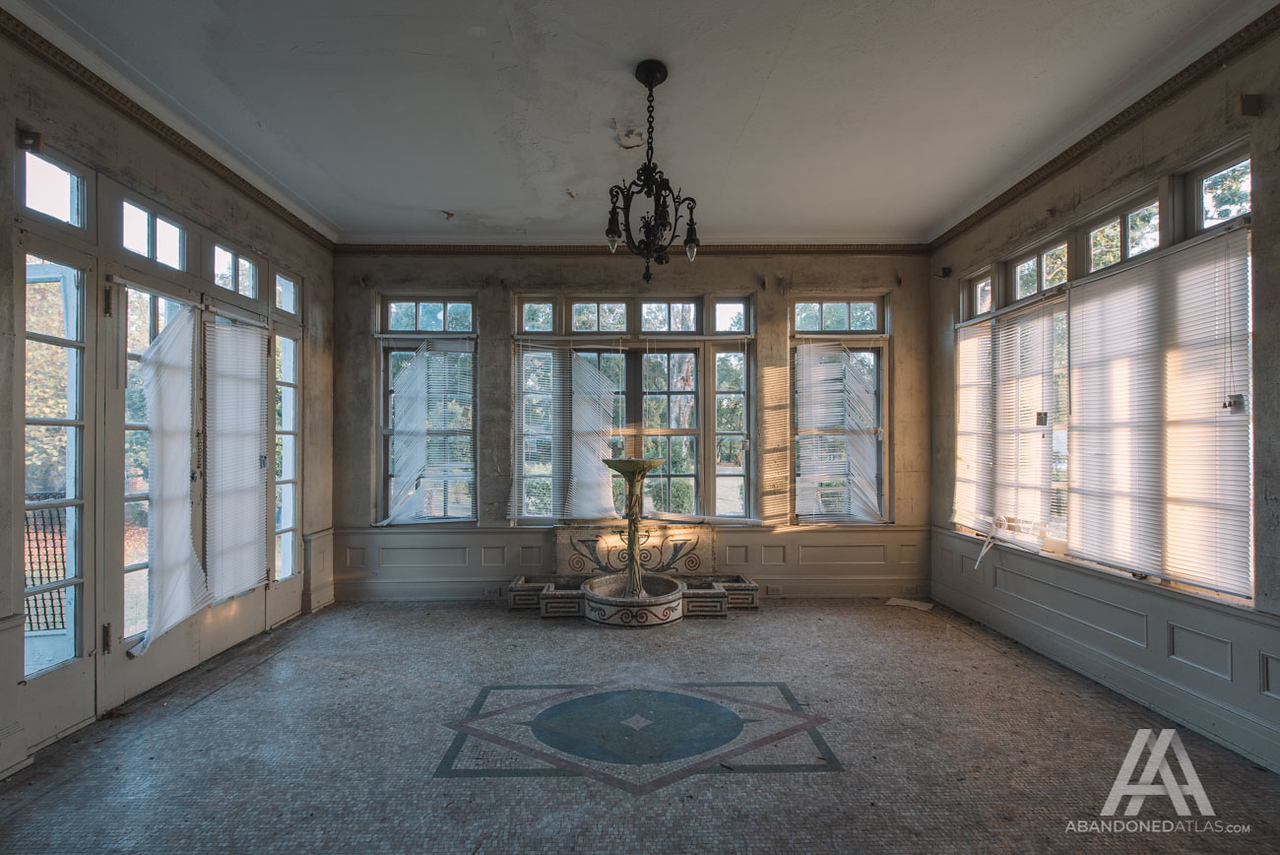
Abandoned John H. Drakeford House in Tuskegee, AL, United States.

The John H. Drakeford House was built in 1890 by John Hamilton Drakeford, the son of Thomas Carlos Drakeford who was an early pioneer and Tuskegee merchant known at the time of his death in 1919 as the “oldest and most successful merchant in Macon County.” John H. Drakeford was a successful businessman himself. For over 40 years, he had been involved in the Bank of Tuskegee having been a bookkeeper when it was organized, and later being promoted to cashier, and was elected president in 1908. He founded the City Bank of Tuskegee and was president of the Merchants and Farmers Bank in Notasulga, the Tuskegee Light and Power Company, and the Tuskegee Land Company. In 1930, he was made president of the State Bankers Association.

He was also involved in politics and held numerous local government positions during his time such as city council member, chairman for the sale of War Savings Stamps for the National Council of Defense for Macon County, and chairman of the Board of Revenue of Macon County. As chairman, he was largely responsible for the negotiations in the paving of the highway and roads connecting Tuskegee to many other county seats.

John H. Drakeford was greatly involved in not only the politics of the city but the community as well. In 1912, he helped in the construction of the small church on the corner of Oak and Maple Streets by ordering the building materials, supervising the work, and guaranteeing a loan of $1,700 for the completion of the building. He later donated $250 of his own money to help pay off the loan. Between 1928 and 1929, John H. Drakeford erected memorial gates at the main entrance of the Tuskegee city cemetery. Since his father’s passing, he had intended to erect a monument in his memory but came to the conclusion that a memorial that served the community was better suited.

As Tuskegee Institute expanded over the years, so did its board of trustees, and included membership from some of the most influential and prominent citizens in the country. Among them was Theodore Roosevelt when he was President of the United States and Seth Low, former mayor of New York City and president of Columbia University. It was tradition for the citizens of the town of Tuskegee to have representation on the Board. In 1930, Drakeford was elected to the Board of Trustees of Tuskegee Institute to succeed his friend C. W. Hare, editor of Tuskegee News, who had passed away earlier that year. He introduced natural gas as a fuel supply for the Institute and offered emergency resources to the school lighting system through the Tuskegee Light and Power Company. He was also interested in the local mission of the Episcopal Church which held services on the campus of the Institute, and in a similar mission for the African Americans of the town of Auburn. He died on February 16, 1934. In a eulogy written by Dr. Robert Russa Moton, president of Tuskegee Institute after succeeding Booker T. Washington, he wrote that he “has had no friend in the town or the state more loyal or more helpful than Mr. John H. Drakeford.“
 The Drakeford House is one of eight historic homes that were added to the National Register of Historic Places in 1985 as a part of the North Main Street Historic District. The home is described as “a very eclectic house, typical of the Late Victorian period. The mass of the house is Queen Anne in style with a corner shingled turret, a gable roof with cross gable extensions, and a single-story porch curving around two sides of the house. Certain elements of the house, however, suggest the much earlier Greek Revival period. The main entry, for example, is Greek Revival in style with sidelights and transom. The porch columnettes are Ionic and rest on square piers. A small pedimented portico projects rather awkwardly from the curving porch. Several recent additions have been made to the house including a screened second-story porch and a first-floor solarium.” Today, many of the houses which make up the historic district are abandoned and in varying states of neglect. Other houses once part of the district no longer exist such as the Wright-Varner-Haygood and Hamilton Houses. In 2018, the owner of the Drakeford House contacted a professor at the Robert Taylor School of Architecture and Construction Science at Tuskegee University wanting to know whether architecture students could develop a proposal for what to do with the dilapidated home. While the owner never attended Tuskegee, his mother, brother, and nephew are all alumni. Students drew up plans to turn the home into a bed and breakfast, as well as a wedding venue, and submitted the plans to the owner. The owner responded by awarding the top three students a scholarship. The owner plans on renovating the house and allowing the university to use the Drakeford House as a lab for learning about historic preservation and restoration.
The Drakeford House is one of eight historic homes that were added to the National Register of Historic Places in 1985 as a part of the North Main Street Historic District. The home is described as “a very eclectic house, typical of the Late Victorian period. The mass of the house is Queen Anne in style with a corner shingled turret, a gable roof with cross gable extensions, and a single-story porch curving around two sides of the house. Certain elements of the house, however, suggest the much earlier Greek Revival period. The main entry, for example, is Greek Revival in style with sidelights and transom. The porch columnettes are Ionic and rest on square piers. A small pedimented portico projects rather awkwardly from the curving porch. Several recent additions have been made to the house including a screened second-story porch and a first-floor solarium.” Today, many of the houses which make up the historic district are abandoned and in varying states of neglect. Other houses once part of the district no longer exist such as the Wright-Varner-Haygood and Hamilton Houses. In 2018, the owner of the Drakeford House contacted a professor at the Robert Taylor School of Architecture and Construction Science at Tuskegee University wanting to know whether architecture students could develop a proposal for what to do with the dilapidated home. While the owner never attended Tuskegee, his mother, brother, and nephew are all alumni. Students drew up plans to turn the home into a bed and breakfast, as well as a wedding venue, and submitted the plans to the owner. The owner responded by awarding the top three students a scholarship. The owner plans on renovating the house and allowing the university to use the Drakeford House as a lab for learning about historic preservation and restoration.
Source: abandonedalabama
